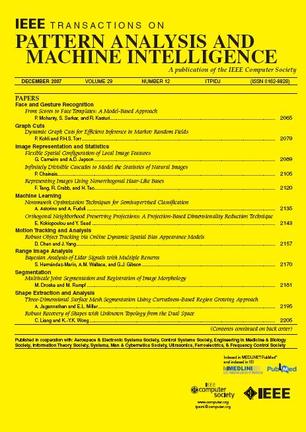Count-Free Single-Photon 3D Imaging with Race Logic
IF 20.8
1区 计算机科学
Q1 COMPUTER SCIENCE, ARTIFICIAL INTELLIGENCE
IEEE Transactions on Pattern Analysis and Machine Intelligence
Pub Date : 2023-07-10
DOI:10.48550/arXiv.2307.04924
引用次数: 1
Abstract
Single-photon cameras (SPCs) have emerged as a promising new technology for high-resolution 3D imaging. A single-photon 3D camera determines the round-trip time of a laser pulse by precisely capturing the arrival of individual photons at each camera pixel. Constructing photon-timestamp histograms is a fundamental operation for a single-photon 3D camera. However, in-pixel histogram processing is computationally expensive and requires large amount of memory per pixel. Digitizing and transferring photon timestamps to an off-sensor histogramming module is bandwidth and power hungry. Can we estimate distances without explicitly storing photon counts? Yes-here we present an online approach for distance estimation suitable for resource-constrained settings with limited bandwidth, memory and compute. The two key ingredients of our approach are (a) processing photon streams using race logic, which maintains photon data in the time-delay domain, and (b) constructing count-free equi-depth histograms as opposed to conventional equi-width histograms. Equi-depth histograms are a more succinct representation for "peaky" distributions, such as those obtained by an SPC pixel from a laser pulse reflected by a surface. Our approach uses a binner element that converges on the median (or, more generally, to another k-quantile) of a distribution. We cascade multiple binners to form an equi-depth histogrammer that produces multi-bin histograms. Our evaluation shows that this method can provide at least an order of magnitude reduction in bandwidth and power consumption while maintaining similar distance reconstruction accuracy as conventional histogram-based processing methods.无计数单光子三维成像与种族逻辑
单光子相机(SPCs)已成为一种有前途的高分辨率3D成像新技术。单光子3D相机通过精确捕捉每个相机像素处单个光子的到达来确定激光脉冲的往返时间。构建光子时间戳直方图是单光子3D相机的基本操作。然而,像素内直方图处理的计算成本很高,并且每个像素需要大量的内存。数字化并将光子时间戳传输到非传感器直方图模块是带宽和功耗高的。我们能在不明确存储光子计数的情况下估计距离吗?是的,在这里,我们提出了一种适合于带宽、内存和计算有限的资源约束设置的在线距离估计方法。我们的方法的两个关键组成部分是(a)使用竞争逻辑处理光子流,它将光子数据保持在延迟域,以及(b)构建无计数等深度直方图,而不是传统的等宽度直方图。等深度直方图是“峰值”分布的更简洁的表示,例如由表面反射的激光脉冲的SPC像素获得的分布。我们的方法使用收敛于分布的中位数(或者更一般地说,收敛于另一个k-分位数)的binner元素。我们级联多个桶来形成一个等深度的直方图,产生多桶直方图。我们的评估表明,该方法可以在带宽和功耗方面至少降低一个数量级,同时保持与传统的基于直方图的处理方法相似的距离重建精度。
本文章由计算机程序翻译,如有差异,请以英文原文为准。
求助全文
约1分钟内获得全文
求助全文
来源期刊
CiteScore
28.40
自引率
3.00%
发文量
885
审稿时长
8.5 months
期刊介绍:
The IEEE Transactions on Pattern Analysis and Machine Intelligence publishes articles on all traditional areas of computer vision and image understanding, all traditional areas of pattern analysis and recognition, and selected areas of machine intelligence, with a particular emphasis on machine learning for pattern analysis. Areas such as techniques for visual search, document and handwriting analysis, medical image analysis, video and image sequence analysis, content-based retrieval of image and video, face and gesture recognition and relevant specialized hardware and/or software architectures are also covered.

 求助内容:
求助内容: 应助结果提醒方式:
应助结果提醒方式:


